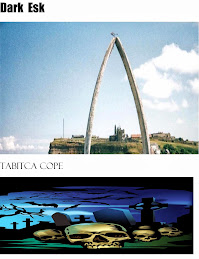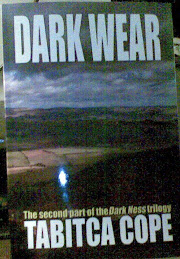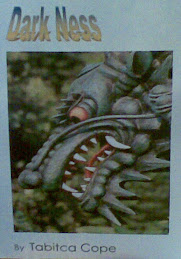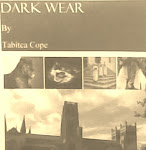Mongolian Lake creatures
Several lakes are said to have lake
monsters dwelling in them in Mongolian.
Lake Hovsgol
Thought to be between two to five million years old, Lake Hovsgol in
is northern Mongolia is the home of a large creature..It is Mongolia’s largest
freshwater lake, with depths of over 800 feet. The lake drains via the Egiyn River, which feeds the
Selenge River in the Lake Baikal drainage basin.
Lake
Baikal has its own monster.See link below.
https://cryptozoo-oscity.blogspot.com/2021/03/mysterious-lake-baikal.html
South of the lake lies the Hövsgöl Mountain Range.
In October 2007 a report appeared in
some Chinese newspapers. Diver Dave Woodward and
sonar operator Gregg Mikolasek were boating
on Lake Hovsgol when they saw a giant
'trace', or shape, suspended about 35 metres below the surface in the freshwater
lake..
'I think we saw something and I think it was about six
metres long,' Woodward recalls telling his diving buddies back at the camp
later that afternoon. About three metres wide in the middle, whatever was down
there exhibited the half-moon shape typical of the image of a fish on sonar.
Its thick central section glowed red, indicating density, another pointer that
whatever it was, it was probably a single entity and not a school of fish.
Woodward thought about going in, hesitated, then decided not to.
(I cannot show the link to the newspaper articles as it
contains a virus.)
It sounds typical of a lake creature description . I was
unable to access other reports.
Could the creature be the same one as in Lake Baikal
perhaps travelling from one lake to another.
Lake Uureg.
The Lake is a saline lake in western Mongolia. It
has a maximum depth of 42 m (138 ft).
A Mongolian traveller
saw a huge creature, which he captured on video whilst he was taking a trip
around Uureg Lake .Traveller Mr S. Sodnomdorj said “Foremost I
thought there was a timber floating on the lake. Then I asked from a local man
who was joining with me if it was possible or not. The local said ‘It is not
possible’. We were in the distance of 250 meters away from the object. After
that I tried to see that thing carefully, and then it seemed like an animal. I
switched on my camera and started to record. I was running to the lake while
recording because it was too far to capture it. That animal began to move its
body and turned to the centre of the lake. Finally I realized it was an
animal”.The creature’s fin appeared on the surface of the lake and it was
approximately 7-8 meters.
Local people tell of a myth about a giant creature in
the Uureg Lake. They call the giant creature “Khukh bukh” (Blue bull).It is said to moo
like a bull and appear once in 60 years. Elderly people used to say “I will
give you to ‘blue bull’, if you behave naughtily” to children. They also used
to warn people not to swim in the lake.
Mr. Sodnomdorj who captured the creature wants to
have the video analysed to prove if it is a creature or
not.
As it is a salt water lake it could be a sea creature that somehow entered the lake.
Near by is another lake with a creature. Uureg Lake lies
a 150 kilometers from the Khyargas Lake.
Khyargas Lake.
This is also a salt water lake and is 50 metres( 150
metres approx) in depth
There was news released about Russian researchers
working on a mysterious trace that was on the lake shore. A group of Mongolian
and Russian geological researchers team
led by Victor Yarmoluk, discovered a huge trace on the shore of the Khyargas
lake in the 1980’s. (Voice of Russia Aug 31, 2013).
The researchers discovered several newly made footprints on
the shore 1.5 km ( 5 feet approx) from
the lake. It seemed like many reptiles came out and were lying on the shore for
some time.
Writer and public figure Igor Grishin and a team visited
Khyargas Lake in 2013 for a second time. They visited the lake first time in
2010.
“We found different sizes of traces and also bones
which are cannot belong to the animals in Mongolia. However fishes that bitten
by big teeth were caught from the lake many times, but there is only a species
called ‘toothless Osman of Altai’ exists in the lake as known. We afforded the
observation of the footprints on the ground and bed of the lake with echometer.
Those footprints can be divided into 3 groups. There can be different sizes of
several animals or those footprints can be traces from different parts of one
animal.”
Researchers found out that some prehistoric animals
such as plesiosaurs were not able to digest its food unless to swallow stones.
Valery Nikolayev is a zoologist and scientist of
Valdai protected area. He stated that he agrees the prediction on existence of
the prehistoric giant reptiles The Uureg Lake belongs to the same region of
geography. It raises the assumption of existence of the similar giant creatures
in both lakes or travelling from one lake to another.
Lake Kanas
Kanas Lake means 'a gorgeous and mysterious
lake' in Mongolian. Local legend has it that there is a huge 'lake monster' in
the lake, which often drags horses drinking by the lake into the water.
Read more here:
https://cryptozoo-oscity.blogspot.com/2009/07/kanas-lake-monster-china.html
Lake
Khaiyr
Its depth is
yet unknown. It is called "Khaiyr" (meaning "to love" in
modern Mongolian)
In1940 there was a sighting of "two large black
creatures" by the polar aviator, Ivan Cherevichny and a polar helmsman Valentin Ivanovych Akkuratov .
They saw two large animals when flying
over the lake at the height of 800–1000 metres. Getting curious, they got down
to 50 metres and observed the animals, but the noise of the plane scared the creatures
and they submerged.
In 1964 when a group of scientists from Moscow
University, claim to have encountered an animal with prehistoric biology whilst
on an expedition surveying mineral deposits.An article written in Komsomolskaya
Pravda by G. Rokosuev explains that the "monster" was initially seen
by N. Gladkikh, the deputy leader of the expedition team.Gladkikh went out to
the lake to draw water and saw a creature that had crawled out onto the shore,
apparently to eat the grass - a small head on a long gleaming neck , a huge body
covered with jet-black skin and a vertical fin along the spine.Gladikikh's
story was at first met with incredulity by the rest of the team. However, the
creature then reappeared to be seen by the leader of the expedition and several
other members.
Rokosuev wrote:
“Suddenly a head appeared in the lake, then a dorsal
fin. The creature beat the water with its long tail, producing waves on the
lake. You can imagine when we saw with our own eyes that the stories were true”
The descriptions sound like a a plesiosaur, which became extinct 66 million years ago. Some researchers think
that this creature represents a mammalian herbivore related to the hippopotamus.
Due to the isolation of this northern lake,a unique adaptation could arise.
The 1964 story has since been reported as a hoax
however the 1940 sighting has not been debunked.
Being so isolated it needs an expedition of neutral
scientists to get to the truth.
It
seems Scotland is not the only country with
lots of lake monsters or water kelpies .Interestingly both are in the northern hemisphere.





















